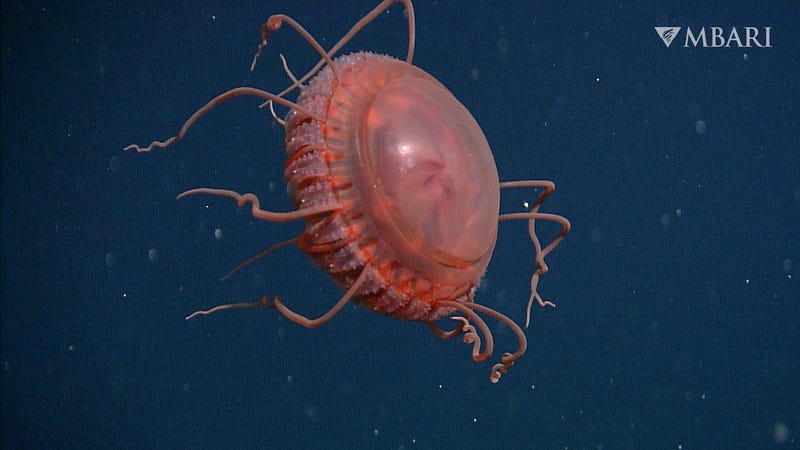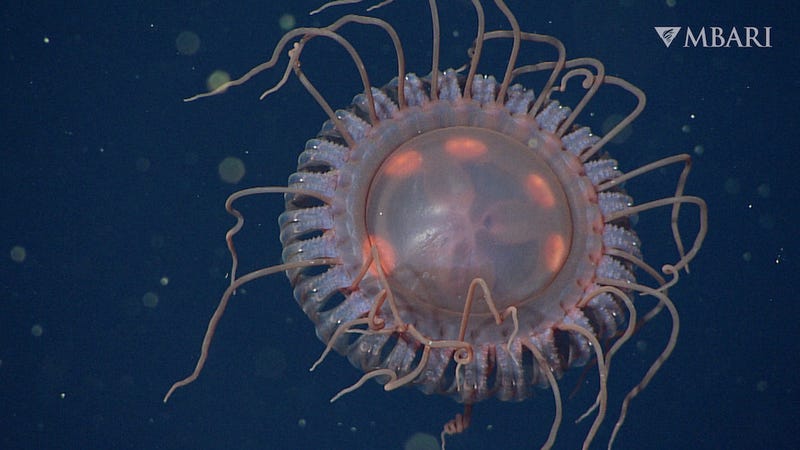The Monterey Bay Aquarium has announced the discovery of a new deep sea creature, honoring its earliest volunteer in the process.
For more, stream KCBS Radio now.

In a paper published last month in the online journal "Animals," marine biologists revealed a species of jelly was detected in Monterey Bay: a red and pink deep sea crown jelly with coiled tentacles, confirmed through DNA analysis and other research to be unique.
"This is a new species," George Matsumoto, senior education and research specialist for the Monterey Bay Aquarium Research Institute, a separate entity from the aquarium itself, told KCBS Radio in an interview. "New to science, anyway."
The species was given the name Atolla reynoldsi, named after Jeff Reynolds – the first Monterey Bay Aquarium volunteer – to commemorate his and other volunteers’ important work for the aquarium, and elsewhere.
"Volunteers really have made a huge difference, not only in science but pretty much in every field you can think of," Matsumoto said.


Atolla reynoldsi have between 26 and 39 tentacles, measuring as much as 5 inches in diameter. The species has only been seen about 10 times in the last 16 years, and Matsumoto noted that it has "probably been in the ocean for quite awhile, but scientists are now recognizing it."
MBARI researchers wrote in last month's paper that "over 98% of the available living space on our planet" is in the ocean, "and we still do not know who is living there or how they interact with one another." They said they had also potentially discovered two new species, but they did not "have enough samples at this time to make that claim."
LISTEN to KCBS Radio
FAVORITE KCBS Radio
Facebook | Twitter | Instagram

